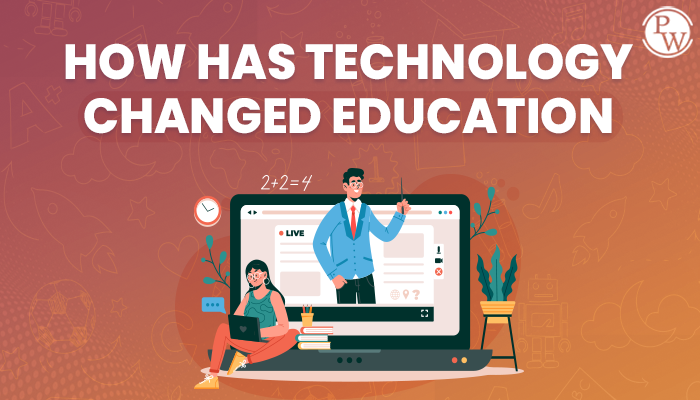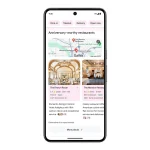See how classroom tech like computers, smartphones, virtual lessons, and cool apps makes learning way more fun, easier, and better than old school textbooks.
Check out the super cool ways your classroom keeps getting upgraded with new gadgets and tech to make learning awesome compared to the boring old days.
How Has Technology Transformed Education?
Technology has fundamentally altered education. From making learning accessible to anyone with an internet connection to enabling engaging, collaborative experiences in virtual environments, technology has redefined the educational landscape. This article explores the profound shifts technology has catalyzed in how students gain knowledge and teachers provide instruction.
Enhancing Accessibility and Reach
Just a few decades ago, learning opportunities depended heavily on factors like geographic location and socioeconomic status. Prospective students needed the means and proximity to attend traditional brick-and-mortar institutions.
Today, someone with a mobile device and internet access can participate in top-quality online courses from anywhere in the world. Platforms like Coursera, edX, and Khan Academy offer thousands of free online courses spanning every academic discipline. Massive open online courses (MOOCs) make elite university-level content available to the masses.
Educational apps and software likewise make learning possible on-the-go. Whether commuting, traveling, or waiting in line, students can flexibly access mobile education resources from their smartphones.
Digital textbooks also increase access and reduce costs compared to their physical counterparts. Instead of students needing to purchase expensive printed textbooks, publishers can distribute interactive, multimedia-rich e-textbooks far more inexpensively and efficiently online.
Customizing the Learning Experience
Traditionally, students in the same grade or program progressed through a standardized, one-size-fits-all curriculum. Today, adaptive learning technologies give each student a personalized learning path tailored to their unique strengths, weaknesses, and preferences.
Sophisticated algorithms track factors like prior knowledge, skill mastery, and engagement levels to serve students appropriate content. As students work through material, the system adapts in real-time based on their performance instead of making them wait for end-of-course assessments.
AI-driven personalized learning also allows students to learn at their own pace, whether that involves accelerating through mastered content or taking more time to reinforce struggling areas. These systems mirror the benefits of one-on-one human tutoring.
Fostering Multimedia Engagement
Instead of solely relying on textbooks and lectures, teachers now have technological tools to create diverse, engaging learning experiences. These include:
- Interactive online lessons with embedded quiz questions, surveys, videos and more
- Immersive virtual reality educational experiences
- Gamified learning challenges and apps applies gaming elements to education
- Tools like Padlet, Mural, and Mentimeter for real-time collaboration and engagement
Digital interactivity engages multiple senses. Dynamic presentation formats cater to diverse learning styles and keep students focused compared to static mediums.
And by using analytics tools, teachers can track student progress and engagement in granular detail. They gain insight into how to fine-tune lessons and personalize instruction for optimal outcomes.
Facilitating Remote Teaching & Global Classrooms
Historically, learning was confined within physical classroom spaces during rigidly scheduled times. Students interacted exclusively with others in the same geographical area.
Today, solutions like Zoom and Google Meet enable remote synchronous teaching. Using webcams and conferencing tools, teachers can stream lessons in real-time to students located anywhere with internet access.
Such virtual environments allow students to learn alongside peers internationally for a truly global classroom. Collaboration transcends the bounds of city, state, and country.
And by recording and sharing lesson replays, teachers facilitate flexible asynchronous learning as well. Students can access lesson materials whenever they have availability rather than conforming to a standardized schedule.
Overcoming Limitations & Looking Ahead
Despite education technology’s immense promise, limitations persist in areas like accessibility, teacher readiness, student privacy/security, and overall effectiveness. Not all students and teachers possess home internet access or devices, for instance. And many instructors still require upskilling for optimal technological integration.
As tools advance exponentially while costs drop, however, technology-driven education will become increasingly accessible on a global scale. Teachers must evolve from being sole content deliverers toward facilitators of personalized, digitally-enabled, student-centered experiences.
Technology will never replace teachers. But as education continues going increasingly high-tech and hybrid, teachers who flexibly leverage technology will be best positioned to enrich learning and student outcomes overall.
Conclusion
Education has seen more technological transformation in the past decade than the previous century combined. Digital advancements have radically expanded who can learn, what they learn, and how the learn.
From facilitating globally connected classrooms to data-driven personalized instruction, technology unlocks educational possibilities unimaginable just years prior. While limitations inhibit universal technological integration, education is undoubtedly amid a digital renaissance.
This golden age of blended, hyperconnected, individualized learning experiences has only just begun. Those schools and instructors who effectively leverage technology will prepare students optimally for succeeding in the modern, tech-infused world.
Let us know in the comments which types of classroom tech and online school you think helps students learn best today compared to way back when!






